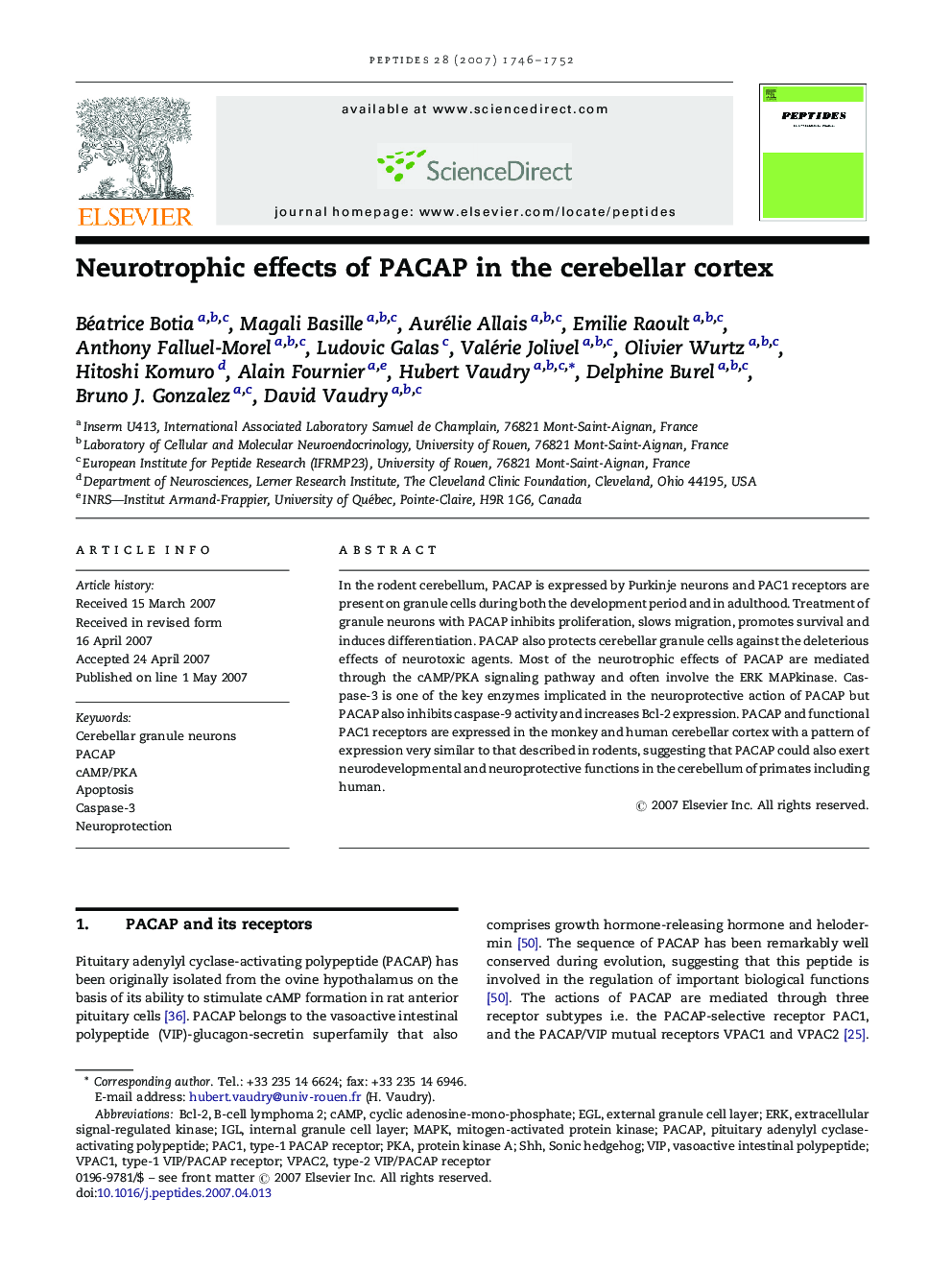| Article ID | Journal | Published Year | Pages | File Type |
|---|---|---|---|---|
| 2008473 | Peptides | 2007 | 7 Pages |
In the rodent cerebellum, PACAP is expressed by Purkinje neurons and PAC1 receptors are present on granule cells during both the development period and in adulthood. Treatment of granule neurons with PACAP inhibits proliferation, slows migration, promotes survival and induces differentiation. PACAP also protects cerebellar granule cells against the deleterious effects of neurotoxic agents. Most of the neurotrophic effects of PACAP are mediated through the cAMP/PKA signaling pathway and often involve the ERK MAPkinase. Caspase-3 is one of the key enzymes implicated in the neuroprotective action of PACAP but PACAP also inhibits caspase-9 activity and increases Bcl-2 expression. PACAP and functional PAC1 receptors are expressed in the monkey and human cerebellar cortex with a pattern of expression very similar to that described in rodents, suggesting that PACAP could also exert neurodevelopmental and neuroprotective functions in the cerebellum of primates including human.
